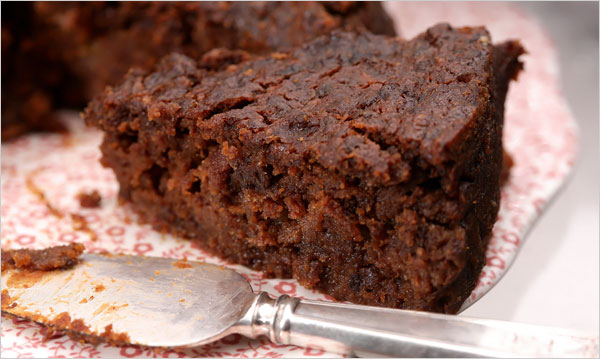Historical commentary. The Caribbean Black cake is a celebratory cake and has for centuries been eaten to celebrate special occasions in the Caribbean and its Diasporas. The history of cake making is almost as old as mankind. The first reference to cakes were made in relation to worship and the raisin cake was not only made for human consumption when travelling and to sustain marching soldiers but also as sacrificial offerings to various gods since such foods were thought to have fertility powers.
Raisin cakes were made by the people living in the Levant (ancient Canaan) and the surrounding areas and were used as sacrificial cakes to the “queen of the heavens”. Such religious rites were a family event, where women baked cakes; the children gathered the wood and fathers lit the fire. Inanna, whose name means “queen of the heavens”, was worshiped in Sumer, in ancient Mesopotamia and was the goddess of war, fertility and love. When this worship spread to other parts of the then world, her name changed.
In Babylonian, Akkadian and Assyrian cultures she was worshipped as Ishtar, while in Ancient Egypt the queen of the heavens became Aset (Isis) and her worship was later embraced by the ancient Greeks and Romans.
Many of those practices continue today under the auspices of Easter, where the practice of eating spiced buns or raisin cakes is as popular today as it was in antiquity.
About this practice, Alan Davidson, in the Oxford Companion to Food wrote: “Hot cross bun, a round bun made from a rich yeast dough containing flour, milk, sugar, butter, eggs, currants, and spices, such as cinnamon, nutmeg, allspice, and cloves. In England, hot cross buns are traditionally eaten on Good Friday; they are marked on top with a cross, wither cut in the dough or composed of strips of pastry.
The mark is of ancient origin, connected with religious offerings of bread, which replaced earlier, less civilized offerings of blood. The Egyptians offered small round cakes, marked with a representation of the horns of an ox, to the goddess of the moon. The Greeks and Romans had similar practices and the Saxons ate buns marked with a cross in honor of the goddess of light, Eostre, whose name was transferred to Easter. According to superstition, hot cross buns and loaves baked on Good Friday never went mouldy, and were sometimes kept as charms from one year to the next”’…. [Oxford University Press: Oxford] 1999 (p. 114)
From a Sausage to a Cake: its British development.
The British Christmas cake has taken centuries to evolve into what it is today. It originally evolved from the English sausage, a dish where fat, meat, spices, fruits, vegetables and grains were all mixed together, then stuffed into the stomach and intestines of animals. From those beginnings, it morphed into other dishes before becoming a staple food in the Caribbean and its Diaspora on special occasions.
One of its transformations was a food named pottage; a thick stew that was simmered for hours and which later became the forerunner to the figgy or plum pudding. Pottage was a mish-mash of ingredients made from whatever poor people had at their disposal to eat and had been around since medieval times. Later, dried plums (prunes) were imported and added to the pottage, making it the first dried fruits to be used in savoury recipes.
Plums had been introduced into Western Europe by the crusaders when they returned from fighting the crusades in the areas of Palestine, Jerusalem and Syria (ancient Canaan) The Italians had learnt to preserve plums by drying them in the sun and it was during the reign of Queen Elizabeth I, that plums were first imported from Italy to England. Such dishes became very popular and many other dried fruits and spices; including cinnamon and cloves (brought into England by the East India Trading Company) were added to meat dishes making it more of a spicy broth.
However it was earlier, during the 15th century, that the generic name for a dish that contained dried fruit was called a “plum pottage” regardless of whether or not it contained plums. By the end of the 16th century dried fruit had become more popular in England and so the savoury ingredients were used less.




